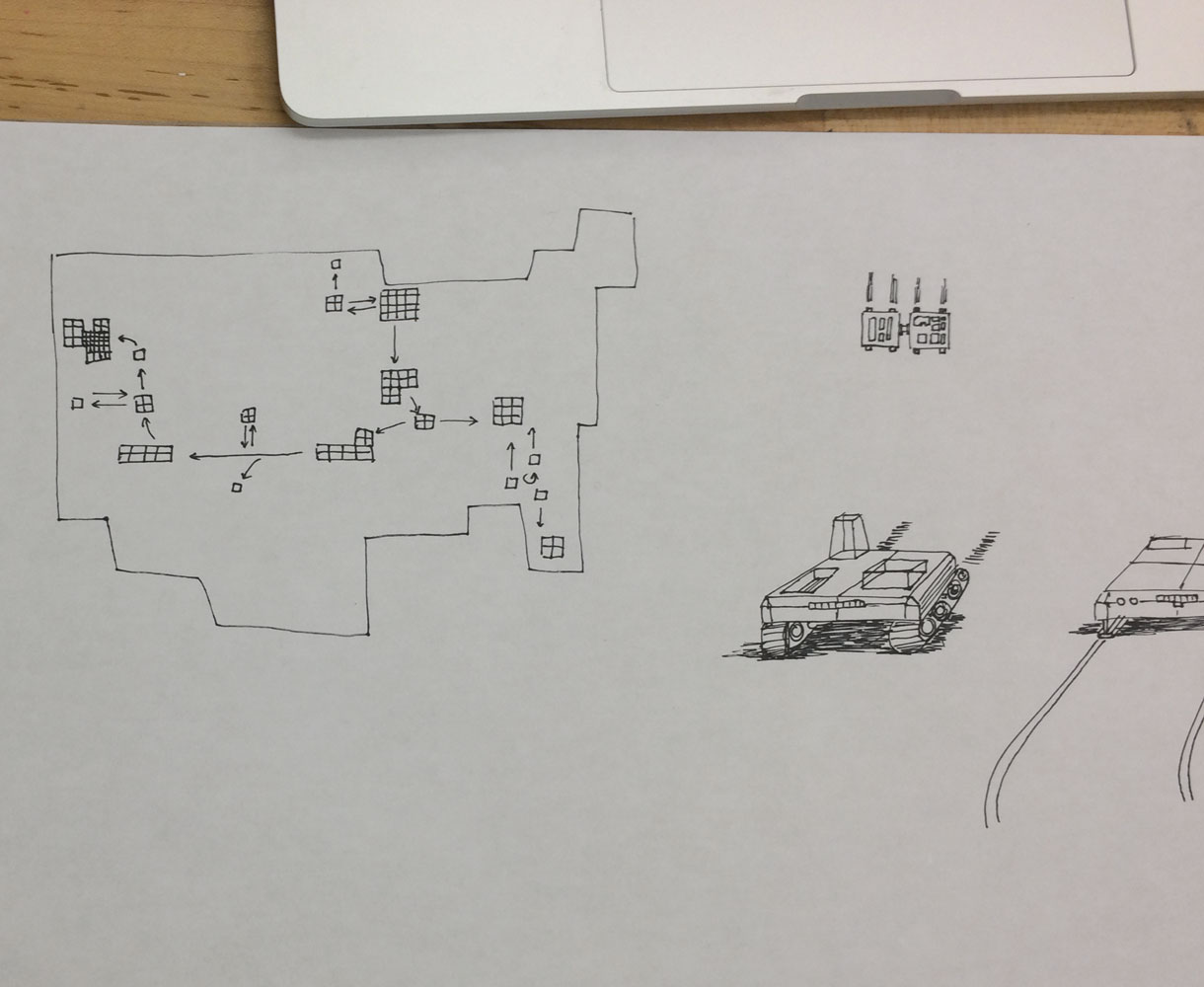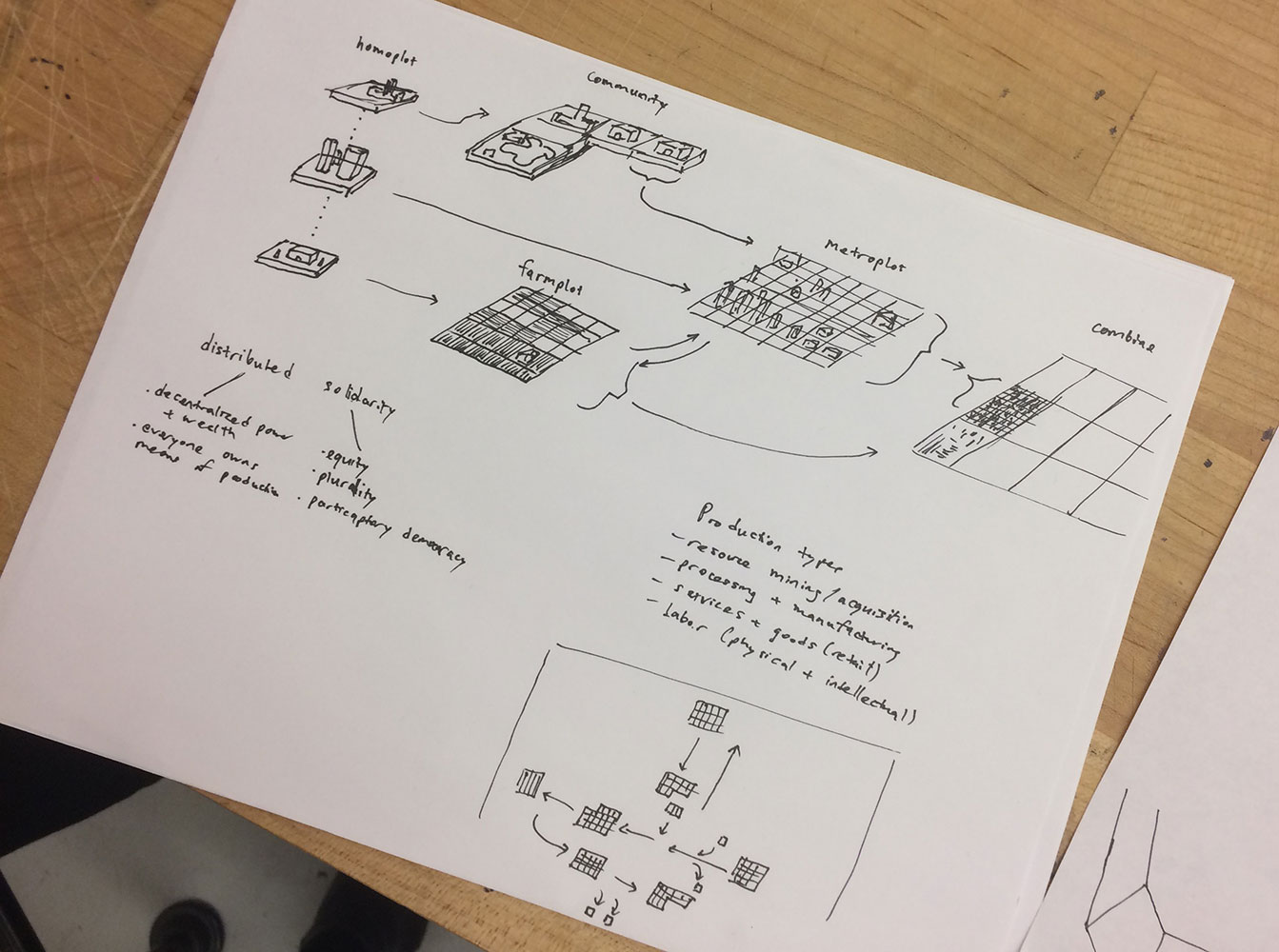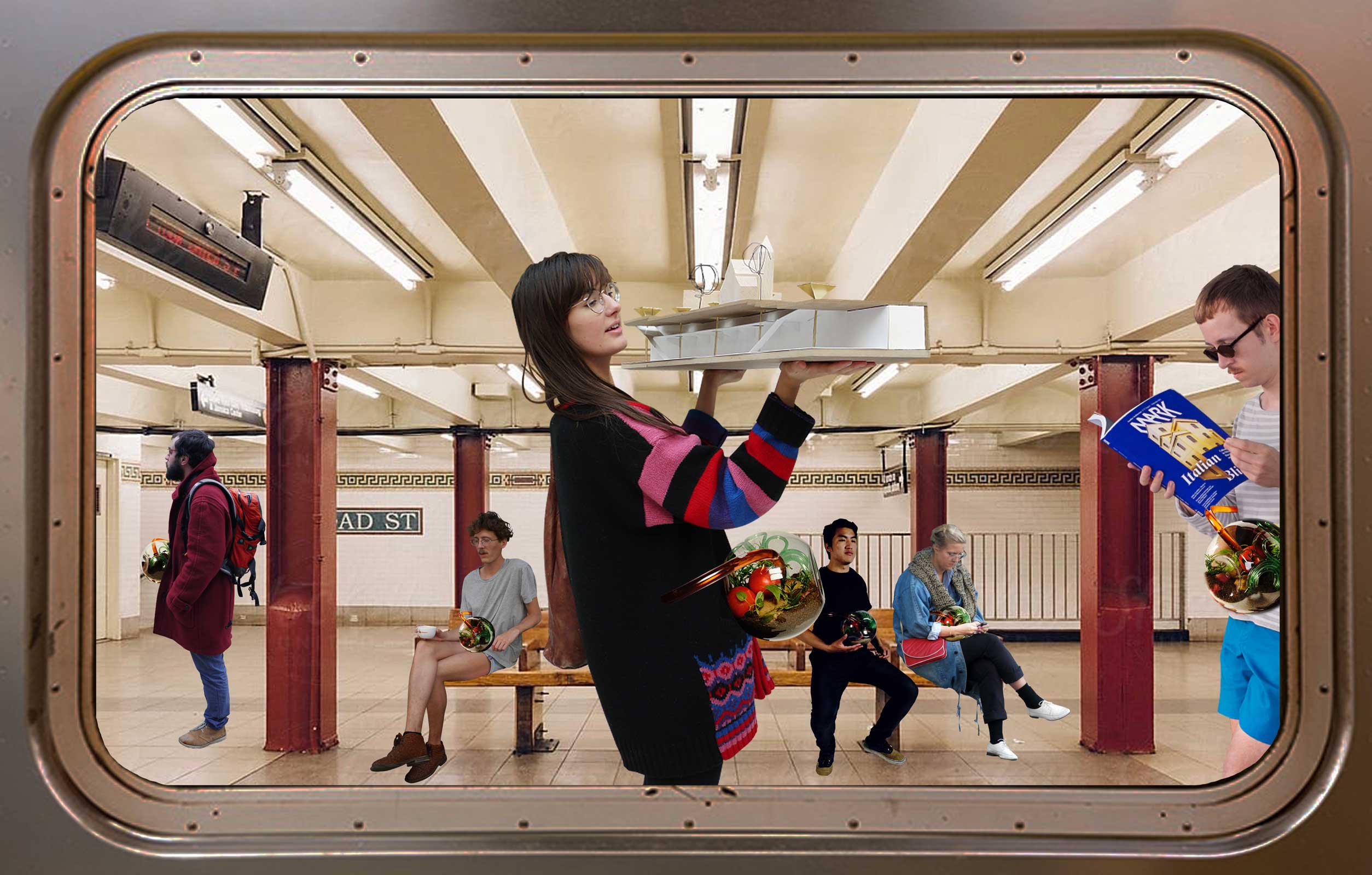
Spring 2019
Washington University in St. Louis
Radical Design: Making Civic Experiences
Sully Bacerdo and Wauson Liang
The Landed Gentry
The final project of the Radical Design semester-length course asks students to create an artifact from a world with different priorities – in this case, a world without Capitalism. Throughout the semester, students worked in groups to understand what Capitalism is, and to imagine how things might be different if we prioritized different values: public instead of private, or care instead of profit.
Sully and Wauson’s project, shown above, builds on their learning about Distributism. As they described in their presentation, “A key tenet of [Distributism] is that Capitalism and Communism are two sides of the same coin in which you always have a very centralized distribution of wealth. Geographically and amongst certain wealthy elites, there’s always going to be a much higher proportion of power, land, and especially means of production. This economic theory that was popular in the late 1800s, early 1900s, was the idea that the only way we could overcome that barrier would be to distribute, (hence the name), the means of production across the widest range of people possible.”
“That got us thinking about land, and how land is your means of production and is often closely tied to your occupation. In modern society, the Proletariat or working class, lower class people are fully reliant on economic systems that are centered in cities, around banks, around corporations, around rich people. They have to live in this periphery and orbit and commute into these centers of wealth. They rely on it for the ability to put food on the table, to have a living and a job. That gets into our title and our value of the Landed Gentry. We first looked at land, we were exploring ‘What if everyone in our society could have their own piece of land and thus have their own means of production on that land?’


“It started off as this mechanical idea that people would have their plot of land that they could up and move, go anywhere, have freedom of mobility, produce whatever they wanted on that land. It evolved into a more biological concept, cells traversing across an organism. We thought it’s less important the idea that a person has a physical plot of land to live on, and more important that we use our artifact to manifest this relationship between the person and their own ability to sustain themselves. We converted the idea from a plot of land into this artifact, which is essentially a external, completely mobile mini-farm, mini-plot of land that goes with you everywhere and is integrated into you.”
“In a society where everyone has this thing, nobody can be disenfranchised from their means of production.”
“It’s always with you, it moves with you everywhere. No one can take that away from you. You never have to worry about whether or not there’s food on the table, whether or not you can produce and sustain for yourself. What kinds of social interactions? What kinds of cultural possibilities? What would the world be like if people didn’t have to worry about having occupations that they didn’t love, didn’t enjoy, that were physically and emotionally harmful to them? And were just able to explore their passions and do what they wish because they know they never have to rely on a job for food?”
“In a society where everyone has this thing, nobody can be disenfranchised from their means of production.”
“It’s always with you, it moves with you everywhere. No one can take that away from you. You never have to worry about whether or not there’s food on the table, whether or not you can produce and sustain for yourself. What kinds of social interactions? What kinds of cultural possibilities? What would the world be like if people didn’t have to worry about having occupations that they didn’t love, didn’t enjoy, that were physically and emotionally harmful to them? And were just able to explore their passions and do what they wish because they know they never have to rely on a job for food?”
